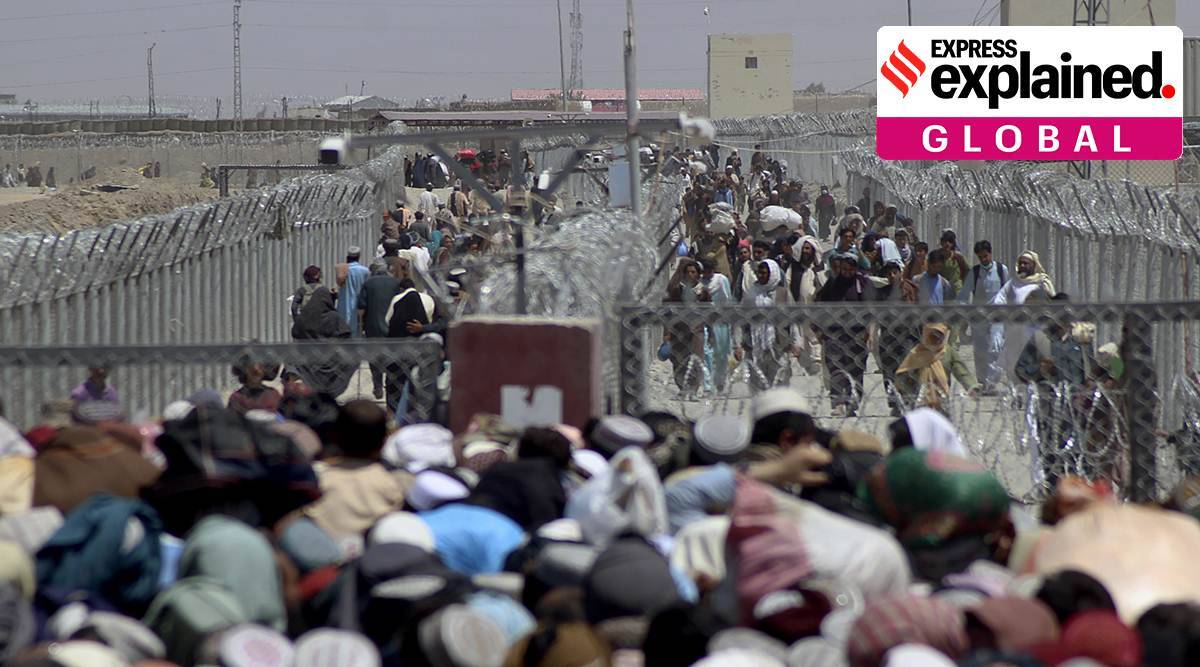
Earlier this week, Taliban spokesman Zabiullah Mujahid told a Pashto channel in Pakistan that Afghans were opposed to the fence erected by Pakistan along the Durand line. “The new Afghan government will announce its position on this issue. Fencing has separated people and divided families. We want to create a safe and peaceful environment at the border so that it is not necessary to create barriers, ”said Mujahid.
The issue has sown mistrust between Afghans and Pakistanis for decades, and is a potential turning point in Taliban-Pakistan relations.
Line dividing the Pashtun
The Durand Line is a legacy of the 19th century Great Game between the Russian and British empires, in which Afghanistan was used as a buffer by the British against a dreaded Russian expansionism in its east.
The agreement delimiting what was known as the Durand Line was signed on 12 November 1893 between British official Sir Henry Mortimer Durand and Amir Abdur Rahman, then Afghan ruler.
Abdur Rahman became king in 1880, two years after the end of the Second Afghan War, in which the British took control of several areas that were part of the Afghan kingdom. It was essentially a British puppet. His agreement with Durand delineated the boundaries of his “spheres of influence” from India and Britain to the Afghan “border” with India.

The seven-clause agreement recognized a 2,670 km line that, according to Rajiv Dogra, author Durand’s Curse: A Line Through Pathan’s Heart, Durand drew in situ on a small map of Afghanistan during his negotiations with the Amir. The line extends from the border with China to the border with Afghanistan with Iran.
Clause 4 stated that the “border line” would be established in detail and delimited by the British and Afghan Commissioners “whose aim will be to reach by mutual understanding a limit which will adhere as accurately as possible to the line shown in map attached to this agreement, taking into account the existing local rights of the peoples adjacent to the border ”.
In fact, the line crossed the tribal areas of Pashtun, leaving villages, families and lands divided between the two “spheres of influence”. It has been described as an “hateful,” arbitrary, illogical, cruel, and deceptive line against the Pashtuns. Some historians believe it was a ploy to divide the Pashtuns so that the British could easily control them. He also put on the British side the strategic Khyber Pass.
Cross-border tensions
With independence in 1947, Pakistan inherited the Durand Line and with it also the Pashtun’s rejection of the line and Afghanistan’s refusal to recognize it. Afghanistan was the only country to vote against Pakistan’s accession to the United Nations in 1947.
‘Pashtunistan’ – a country independent of the Pashtuns – was a demand made by Khan Abdul Ghaffar Khan at the time of the partition, although he later resigned himself to the reality of partition. The proximity of the “Gandhi border” to India was a point of tension between the two countries almost immediately. Fear of Indian support for Pashtun nationalism haunts Pakistan so far and is embedded in its Afghan politics.
Some see the creation and support of Pakistan to the Taliban as a step towards destroying ethnic Pashtun ethnic nationalism with Islamic identity. But it did not work as Pakistan had planned. When the Taliban first took power in Kabul, they rejected the Durand Line. They also strengthened the Pashtun identity with Islamic radicalism to produce the Tehreek-e-Taliban Pakistan, whose terrorist attacks have shaken the country since 2007.
The fence
As cross-border tensions peaked in 2017 with several attacks on Pakistani border posts by militants Pakistan accused Afghanistan of taking refuge, while the Afghan government accused Pakistan of giving refuge to the Afghan Taliban. and the Haqqani – Pakistan network began erecting a fence on the Durand line. While he may have slowed the movement of militants from Afghanistan to Pakistan, he did little to stop the Afghan Taliban movement back and forth.
The fence, which is already finished, has been a source of further tensions, as Afghans and Pashtuns on both sides of the border see it as a move by Pakistan to formalize the border, making its division permanent. This is the fence that Zabiullah Mujahid said was not acceptable to the Taliban.
An Al Jazeera report said the $ 500 million fencing is actually two sets of chain link fences with a 6-foot gap, filled with coils of concertina wire. It is 11.6 feet high on the Pakistani side and 13 feet on the Afghan side. It is equipped with surveillance cameras and infrared detectors and is rated by 1,000 surveillance towers. Cross-border movement will only be allowed through 16 formally designated points after the completion of the project.
Pakistan believes that in the new situation in Afghanistan, the fence will help control any overflow of unrest and chaos.
Newsletter | Click to get the best tellers of the day in your inbox